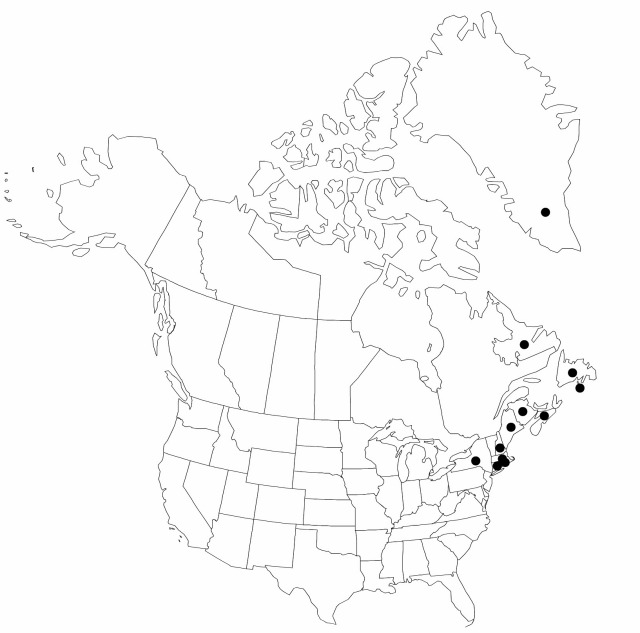Carex panicea
Sp. Pl. 2: 977. 1753.
Plants colonial, long-rhizomatous. Culms (0.8–)14–75 cm, smooth distally. Leaves: proximal sheaths with blades, pale brown, 3–6 mm thick; ligules 0.4–3.5(–8.5) mm, usually wider than long; leaf blades somewhat glaucous, flat, 5.5–33 cm × 1.4–4.7 mm, folded at bases, margins revolute, herbaceous. Inflorescences 3.2–21 cm, 1.7–3.5(–4.3) times as long as proximal bract; proximal bract (1.3–)2–9 cm, sheath 0.5–2.4 cm, blade 1.1–7.1 cm; pistillate spikes densely flowered, ovoid to cylindric, 0.8–2.9 cm × 4.5–7.5 mm; lateral spikes erect or ascending on stiff peduncles. Pistillate scales dark reddish purple with hyaline margins, green centers, apex obtuse, centers papillose. Perigynia ascending to spreading, yellowish green to brown, often suffused with reddish purple, broadly obovoid, 2.6–5.1 × 1.4–2.4 mm; beak minute, sharply bent. Achenes pale brown, 1.8–2.9 × 1.3–1.9 mm. 2n = 32.
Phenology: Fruiting late spring–early summer.
Habitat: Wet to dry, usually sandy, acidic fields
Elevation: 0–20 m
Distribution

Greenland, St. Pierre and Miquelon, N.B., Nfld. and Labr., N.S., Conn., Maine, Mass., N.H., N.Y., R.I., Eurasia.
Discussion
Carex panicea is introduced into continental North America and native to Greenland; however, some people believe that the taxon was introduced to the New World by the Vikings.
Selected References
None.
